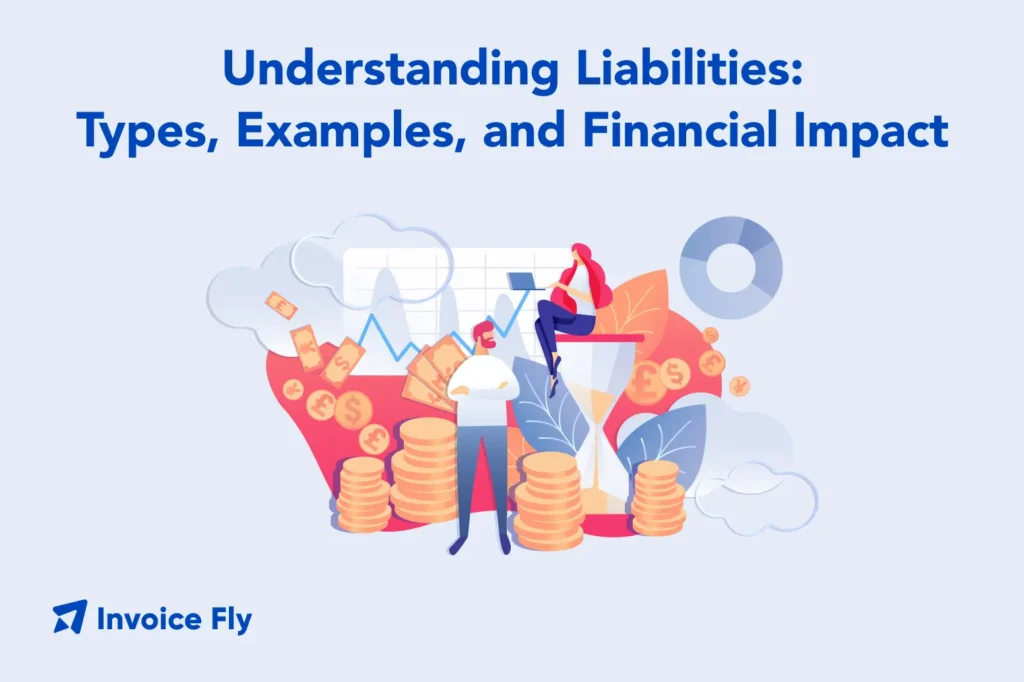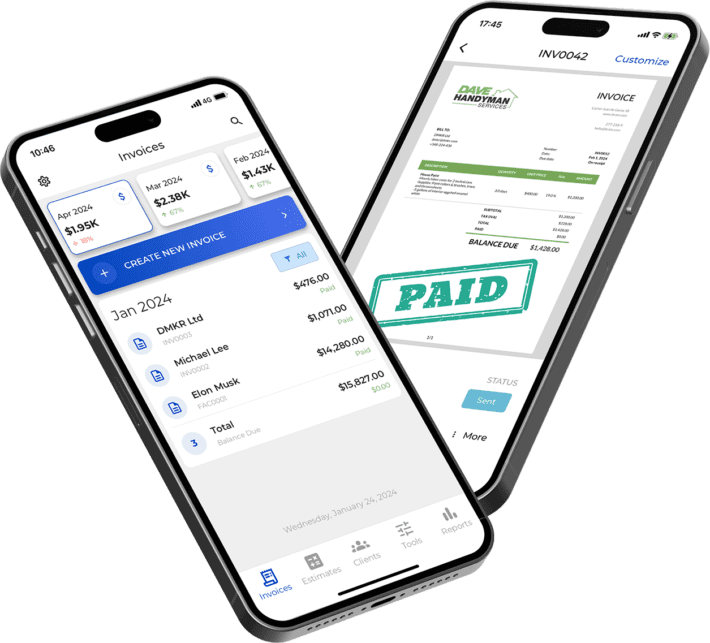Understanding Liabilities: Types, Examples, and Financial Impact

Table of Contents
Liabilities are the debts and financial obligations a business owes to other people or companies. Knowing what liabilities are—and how they affect your financial statements—is essential for business owners, investors, and accountants.
Liabilities can be short-term, like unpaid bills or wages, or long-term, like loans and mortgages. Tracking them on your balance sheet helps you stay organized, meet legal obligations, and understand your company’s true financial position.
In this guide, we’ll cover the definition of liabilities, their types and examples, how they affect your business, and ways to manage them responsibly.
What Are Liabilities?
In accounting, a liability is any financial obligation that requires future payment of money, goods, or services. Simply put, it’s what your business owes to others.
According to Cornell Law School, a liability represents a legal responsibility or debt that must be settled. On the balance sheet, liabilities appear alongside assets and owner’s equity. This equation shows how your company is funded—what portion comes from borrowing (liabilities) and what portion comes from ownership (equity):
Assets = Liabilities + Owner’s Equity
So, if your company has $500,000 in total assets and $300,000 in liabilities, the owner’s equity equals $200,000.
Common examples of liabilities include:
- Bank loans and credit lines
- Accounts payable (money owed to suppliers)
- Wages payable
- Taxes owed
- Lease or mortgage obligations
If you want a simple overview of where liabilities appear in your financial statements, explore our guide on what a balance sheet is in accounting. It shows how liabilities, assets, and equity work together.

Types of Liabilities
Liabilities fall into three categories: current, non-current, and contingent. Each type affects your finances differently.
Current Liabilities
Current liabilities (or short-term liabilities) are debts due within one year or one operating cycle. They’re usually paid using current assets like cash or accounts receivable.
Examples include:
- Accounts payable – money owed to vendors or suppliers for goods or services received
- Short-term loans – lines of credit or notes payable due within 12 months
- Accrued expenses – wages, utilities, or interest owed but not yet paid
- Taxes payable – income, sales, or payroll taxes due soon
A contractor like Jessica, who runs a plumbing business, keeps a close eye on her current liabilities to protect her cash flow. She uses proper accrual basis accounting entries helps her maintain a healthy liquidity ratio and avoid late payment fees.
Properly managing short-term liabilities ensures your business can meet obligations on time. Learn how to calculate your financial health in our liquidity ratio guide.
Get Started with Invoice Fly’s Software
Invoice Fly is a smart, fast, and easy-to-use invoicing software designed for freelancers, contractors, and small business owners. Create and send invoices, track payments, and manage your business — all in one place.

Non-Current Liabilities
Non-current liabilities, also called long-term liabilities, are obligations due after more than one year. They represent long-term borrowing or future financial commitments that don’t require immediate payment.
Examples include:
- Long-term loans or mortgages
- Bonds payable
- Deferred tax liabilities
- Long-term lease obligations
- Pension obligations
According to Federal Reserve data, businesses across various sectors carry significant non-current liabilities to fund growth and capital investments. These are often used to finance expansion or purchase equipment, but too much long-term debt can limit financial flexibility.
Understanding how assets depreciate over time is important when you have long-term liabilities tied to equipment or property. Use our guide on how to calculate depreciation to track long-term assets linked to loans.
Contingent Liabilities
A contingent liability is a potential debt that depends on a future event—like a lawsuit settlement or product warranty claim. These liabilities are classified differently because they may or may not require payment.
For example, if your business is facing legal action, you only record it as a liability if:
- The outcome is probable
- The amount can be reasonably estimated
Many businesses set aside reserves for contingent liabilities to ensure they’re prepared if potential obligations become real. This is where understanding the liability adequacy test becomes important—particularly for insurance companies and businesses with significant warranty obligations.

Liability in Business and Corporate Finance
Liabilities help businesses operate, grow, and invest in their future. In corporate finance, they allow companies to use leverage—borrowing money to fuel expansion.
Liabilities affect several key financial indicators:
1. Debt-to-Equity Ratio
This ratio compares total liabilities to shareholder equity.
A higher ratio means more debt financing; a lower ratio means more equity financing.
2. Solvency
You need enough assets to cover your liabilities. If liabilities outweigh assets, a business may be at risk of insolvency.

3. Creditworthiness
Banks and lenders look at your liabilities to determine whether you qualify for financing.
Consider Marcus, who runs a construction business. He took out a long-term business loan to buy equipment, which increased his liabilities—but also increased his earning capacity. By reviewing his profit and loss statement monthly, he makes sure the extra debt is working in his favor.
If you want to better understand how liabilities affect your financial results, review our breakdown of gross profit vs net profit and see how interest and tax obligations influence your bottom line.
Liability Insurance and Financial Protection
Liability insurance protects your business if you’re legally responsible for damages, injuries, or mistakes. Without coverage, a single lawsuit could financially ruin a small business.
Here are the major types of liability insurance:
- General Liability Insurance
Covers bodily injury, property damage, and advertising claims. Some businesses need commercial general liability insurance as part of local regulations or contracts.
- Professional Liability Insurance
Also called errors and omissions insurance, this covers claims of professional negligence.
- Commercial Auto Liability Insurance
Covers vehicles used for business purposes.
- Employment Practices Liability Insurance
Protects employers from claims such as harassment or wrongful termination.
- Fiduciary Liability Insurance
Covers individuals responsible for managing employee benefit plans.
Understanding liability insurance coverage helps ensure your business is protected from unexpected risks. While coverage varies, the cost of liability insurance is often far smaller than the cost of defending a lawsuit.
Get Started with Invoice Fly’s Software
Invoice Fly is a smart, fast, and easy-to-use invoicing software designed for freelancers, contractors, and small business owners. Create and send invoices, track payments, and manage your business — all in one place.

Limited Liability Companies, Partnerships, and Corporations
The concept of limited liability means owners aren’t personally responsible for company debts beyond what they’ve invested. This legal structure protects personal assets and encourages entrepreneurship by separating business and personal finances.
Limited Liability Company (LLC)
An LLC blends the flexibility of a partnership with the legal protection of a corporation. Owners (called members) aren’t personally liable for business debts or lawsuits against the company. If the LLC defaults on a loan, creditors can only go after business assets, not your personal home or savings.
Limited Liability Partnership (LLP)
An LLP protects each partner from being liable for the actions of other partners. It’s particularly common in professional fields like law, accounting, or architecture. Under joint and several liability rules, an LLP structure prevents one partner’s mistake from wiping out another partner’s personal assets.
Limited Liability Corporation
A limited liability corporation (sometimes used interchangeably with LLC, though technically distinct in some jurisdictions) offers strong personal asset protection, making it suitable for larger entities with multiple shareholders.
Sarah, a freelance graphic designer, formed an LLC after her business grew. She wanted the limited liability protection in case a client sued over a design dispute. This way, her personal savings and home remained protected—only her business assets were at risk.
To learn which structure fits your business best, see our detailed comparison in LLC vs. Sole Proprietorship for Contractors.

Calculating and Managing Liabilities
Properly tracking and managing your liabilities is crucial for maintaining financial health and making informed business decisions.
1. Calculate Total Liabilities
You can determine total liabilities using your balance sheet formula:
Total Liabilities = Total Assets – Owner’s Equity
Tracking this regularly helps you understand your debt position and calculate important metrics. The Federal Reserve’s Z1 Financial Accounts publishes quarterly data on liabilities across different sectors, providing benchmarks for comparison.
To see liabilities in action, explore your ledger balance, where all your outstanding debts and credits are listed.
2. Record Liabilities Accurately
All liabilities should be recorded in your general ledger using double-entry bookkeeping. This means every liability entry affects at least two accounts. See our guide on journal entries for practical examples of how to record liabilities correctly.
3. Manage Payment Schedules
Smart liability management includes:
- Setting calendar reminders for due dates
- Negotiating longer payment terms with suppliers when possible
- Paying off high-interest debt first
- Using invoice payment terms strategically to manage cash flow
Tools like our Client Portal can help track invoices and payments automatically, ensuring you never miss a payment deadline.
4. Separate Short-Term and Long-Term Debt
Classifying liabilities properly helps you analyze liquidity and future financial obligations clearly. When you understand your short-term obligations, you can better manage your cash flow and ensure you have enough working capital.
This distinction is critical when potential investors or lenders review your assets and liabilities. It also matters when you’re applying for financing or preparing your income statement before tax season.
5. Monitor Regularly
Use Business Reports to view liabilities across periods, forecast future payments, and ensure your books stay balanced. Regular monitoring helps you spot trends, identify potential cash flow problems, and make proactive adjustments.
Kevin, who runs a small electrical contracting business, reviews his liabilities monthly. By tracking his accounts payable, loan payments, and expense reports together, he can see exactly where his money goes and plan accordingly. This helped him avoid a cash crunch when three major invoices came due in the same week.
Understanding how to calculate billable hours and properly invoice clients also helps ensure you have steady income to cover your liabilities.
Conclusion: Liabilities Are Key to Financial Clarity
Liabilities aren’t necessarily bad—they’re a normal part of running and growing a business. Loans, supplier credit, and leases help fund operations and expansion. The key is to manage liabilities responsibly, balance them against assets, and protect your business with the right insurance and legal structure.
Whether you’re tracking accounts payable, managing a mortgage, or evaluating professional liability insurance options, understanding your financial obligations helps you make smarter choices, attract investors, and maintain long-term stability.
Get Started with Invoice Fly’s Software
Invoice Fly is a smart, fast, and easy-to-use invoicing software designed for freelancers, contractors, and small business owners. Create and send invoices, track payments, and manage your business — all in one place.

FAQs About Liabilities
Liabilities are debts or obligations you owe; assets are what you own. Together, they form the foundation of your balance sheet and show your company's financial position. The relationship between them determines your owner's equity.
A car is an asset because it's something you own with value. However, if it's financed with a loan, the loan itself is a liability. So you can have both: the car as an asset and the outstanding loan balance as a liability on your balance sheet.
Business structures like limited liability companies (LLCs), limited liability partnerships (LLPs), and corporations limit personal liability, protecting your personal assets from business debts. Additionally, having proper liability insurance coverage provides financial protection against lawsuits and claims.
Yes. The total unpaid portion of your car loan is a liability. Your monthly car payment is simply the scheduled amount you pay to reduce that liability over time. Once the loan is fully paid off, the liability is eliminated.
Liabilities provide insight into a company's financial health, credit risk, and ability to fund growth responsibly. They show how much a business owes, help calculate important ratios like debt-to-equity, and indicate whether the company can meet its financial obligations. Properly managed liabilities support sustainable growth, while excessive liabilities can signal financial distress.
